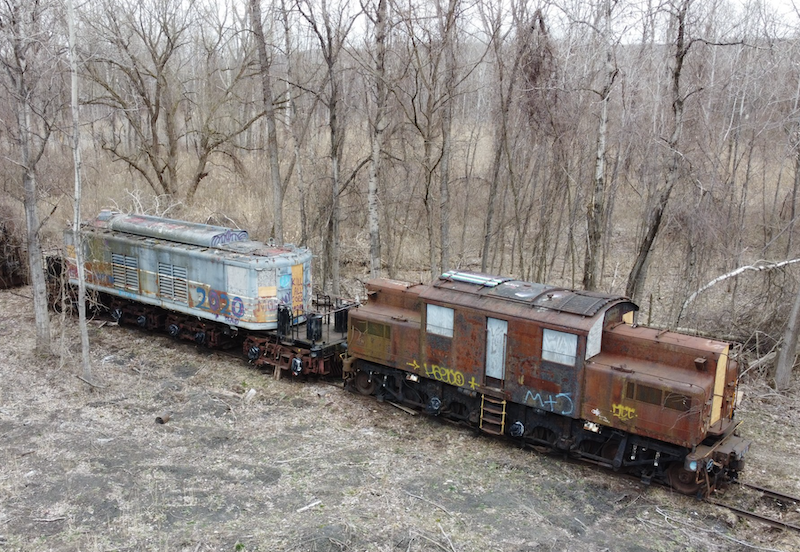By Justin Franz
GLENMONT, N.Y. — The future is looking increasingly grim for a pair of rare New York Central electrics stranded at an old power plant near Albany, N.Y.
Earlier this year, it looked as if the owner of the electric motors, the Danbury Railway Museum, was going to be able to move them in a matter of weeks. But since then the costs have increased dramatically and the president of the group said if they’re not moved in a month, they could be lost for good.
The Danbury Railway Museum acquired S-1 6000, built by Alco/GE in 1904, and T-3a 278, built in 1926, back in 2013, but had been unable to move them until this year when a developer told them they needed to move. The land the electrics are sitting on is supposed to be turned into a wind turbine tower factory. Earlier this year, Danbury was able to raise some funds for the move that at the time was expected to cost upwards of $160,000. The museum had even secured R.J. Corman to break the electrics apart and move them out in pieces because the route they need to travel is soft and may not be able to handle the weight.
But then work on the site came to a halt, in part because of a lawsuit from local residents trying to fight the construction of the windmill farm and because the contractor needed additional permits. Work resumed on the property on November 15 and when it did, the contractor told the museum that the time to move the electrics had come. But now, the cost of such a move has increased dramatically. In hopes of getting more time to raise money, the museum asked if the electrics could be moved to another spot on the property temporarily. But the contractor said that was not feasible.
The move off the property has also been complicated because the electrics would have to cross over a buried gas line. The owner of that line said they would only allow that if a temporary bridge structure was built. Another route would require a move under a railroad mainline and a sharp incline on the other side of the tracks makes that impossible.
At this point, it’s unclear if the museum will be able to save the electrics at all.
“While we didn’t create the situation where the locomotives ended up where they are now, a small group of strong-willed volunteers and a lot of money and resources has already been expended trying to undo mistakes of the past,” the museum said in a press release. “We want to see these locomotives saved, if not by us then so be it, we are currently working many angles to try and secure the future of the two electrics, but the iron is hottest now, and now is the time to strike as it is about to hit the fan.”
The S-1 was the only of its kind ever built and was the prototype that all of the NYC’s future electric locomotives were built on, including the T-3a. T-3a 278 is the sole survivor of 36 such locomotives built between 1913 and 1926. The T-3a electrics were among the Central’s most powerful and hauled everything from commuter trains to the 20th Century Limited. Once larger and more powerful locomotives were acquired, the S-motors found a new role as switchers working in the subterranean depths of Grand Central Terminal, with some surviving in active service until 1981. Only a handful of electric locomotives survived into the Penn Central era, replaced by dual-mode FL9s absorbed from the New Haven fleet. T-motor 278 found a new home assigned to the wire train in Sunnyside Yard in Queens (since the T-motor could draw power from the third rail in the tunnels while the overhead wire was repaired).
The odd non-revenue assignments proved to be the only way these historic electric locomotives were saved. The S-motor and T-motor were acquired by the Mohawk & Hudson Chapter of the National Railway Historical Society in the 1980s and given a cosmetic restoration and placed on display at the local fairgrounds. In 1988, they were hauled back to Grand Central Terminal to be used in a scene in the 1988 film “The House on Carroll Street,” starring Kelly McGillis and Jeff Daniels. After that, they were returned to M&H Chapter and moved to their present location in Glenmont. In the decades since, the Chapter was no longer able to care for the increasingly isolated units located on private property. While they have been heavily vandalized over the years, they remain good candidates for cosmetic restoration.
Those interested in making a donation can visit DanburyRail.org/electrics.



